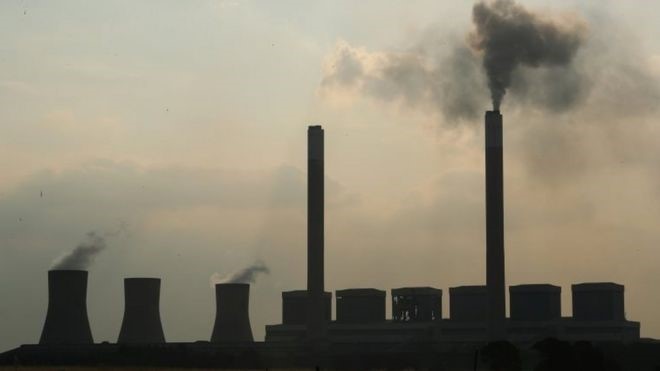India’s Fear of Pollution, but Love for Coal
India has issued a ‘Climate Assessment Report’ for the first time in which it has presented a bad picture of the current situation and a warning has been issued for the future.
This report has been released at a time when India has adopted coal as a source of energy to bring back the economy that is suffering from the corona epidemic.
India has opened the doors of its coal mines to the private sector and that too when coal is considered the biggest culprit of climate change.
The Ministry of Earth Sciences (Ministry of Earth Sciences), Government of India has released this report titled ‘Assessment of Climate Change over the Indian Region’.
The report says that the country is already experiencing bad weather conditions. Human activities going on around the world are mainly responsible for changes in the regional environment.
Among the human activities responsible for climate change is the consumption of fossil fuels and coal is considered to be the dirtiest fuel.
What does the report say?
Coal emits carbon dioxide at extremely high levels. This is the greenhouse gas that causes global warming by stopping the heat of the atmosphere and this situation leads us to climate change.
India, one of the major coal producing countries, is the third largest carbon emitting country in the world after China and USA. And geographically, India is also located in that part of the earth which is considered to be one of the risky climatic zones.
The first ‘Climate Assessment Report’ states that India is constantly facing droughts, severe rains and dangerous cyclonic storms. These natural disasters are becoming more and more serious again and again.
According to the report, if this situation of carbon emission remains, by the end of this century, the average temperature of the country will increase by more than four degrees and the risk of hot winds will increase three to four times. More than twice as many droughts can occur within a decade.
Damage to the country
According to the ‘Climate Assessment Report’ climate change is going to harm almost every sector of the country.
“The rapid changes in India’s climate are projected to increase the pressure on the country’s natural ecosystem, agricultural produce and natural water resources. This will increase the country’s biodiversity, food, water, energy security and could have serious side effects on public health. “
Scientists say that under the Paris Climate Change Agreement, countries will have to cut carbon emissions by five times more than what they have promised to keep the global average temperature constant of two degrees.
Things were different before the Corona epidemic, but after the epidemic, there are fears that carbon emissions may increase in a great way as many countries will try to get their economies back on track as soon as possible.
And there has also been a warning for this that this could worsen the climate crisis. However, the schemes being adopted to bring the economies back on track have called for a clean and low carbon emission model.
Report warning
India’s climate report says that in the summer of 1951 to 2015, the summer monsoon rains have fallen by six percent.
According to the report, this decline is more noticeable in the Gangetic plains and part of the Western Ghats.
Not only this, between 1901 and 2018, the average temperature of the country has increased by 0.7 degree Celsius.
According to the report, as long as the hot winds used to run, now it will run twice as long.
Between 1951 and 2016, the incidence of drought and the areas affected by it has increased to a great extent.
In the last two decades, the events of the severe cyclonic storm that comes after the monsoon are happening again and again.
Climate-Smart Policies
A government report on the impact of climate change in the sea, two years ago, was also warned about cyclonic storms.
Leaders around the world are supporting that climate-smart policies (i.e. policies to protect the environment) should be adopted to bring economies back on track so as to avoid the potential risk of a climate crisis.
But the reality is that many countries are not doing anything in this direction because the situation arising out of Corona epidemic has tied their hands.
According to Bloomberg’s report, the world’s 50 largest economies have promised to spend $ 1.2 trillion to revive the economy from the Corona epidemic.
But even an amount equal to the amount of this amount has not been kept due to economic activities which save the environment.
Coal field of India
While announcing the opening of India’s 41 coal mines to the private sector, Prime Minister Narendra Modi said last week, “Increasing coal production will increase energy production. Also, production in steel, aluminium, cement and fertilizer sectors will increase. “
India produced 675 million tonnes of coal in the year 2018. More than 70 percent of the country’s electricity generation is generated from coal-fired power plants.
Prime Minister Modi also said that there are huge reserves of coal in 16 districts of the country and their exploitation for the development of infrastructure, 500 billion rupees will be invested.
He also said that the coal extracted from mining will be converted into gas so that the environment can be conserved.
But the question arises whether any such technology is available and how much it will cost.




